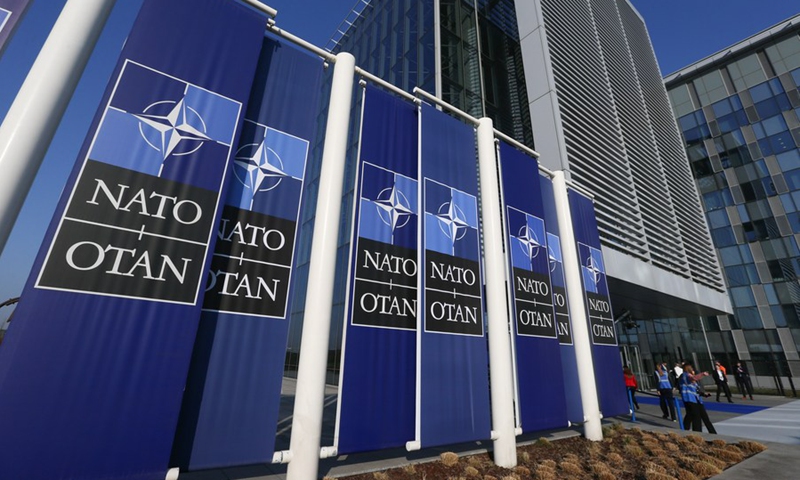Provocative NATO Undermines Security of the Nordic Region
TRANSCEND MEMBERS, 19 Jun 2023
Jan Oberg | Global Times – TRANSCEND Media Service
27 May 2023 – Since 1945, the Nordic countries — Denmark, Norway, Sweden, Finland and Iceland — have chosen different security political solutions, but they all adhered to the idea of “Nordic balance.” When making decisions, each would take the consequences for the others into account and do nothing harmful.
Interestingly, this flexible and diverse policy for the region has served all quite well, whereas they would never have agreed to form a defence alliance with one policy for all.
Once upon a time, Finland’s former president Urho Kekkonen stood for policies of active neutrality, a go-between role and initiating the OSCE (Organization for Security and Co-operation in Europe). Finland was proud that its people felt that neither the East nor the West was an enemy (equi-distance). And that was during the height of the Cold War when the Warsaw Pact was about 10 times stronger in proportion to NATO than Russia is today. One reason was that European policies had an intellectual foundation and leaders had consciousness about what war meant. Not so today.
By joining NATO, the two different neutrals — Sweden and Finland — have now abandoned what served them well for so long. Old-time members, Denmark and Norway, have changed to accept foreign troops and pre-positioning of weapons on their territory. Iceland remains an unarmed member providing the Keflavik Base.
These policy changes imply that the Baltic Sea is no longer a neutral buffer zone. It’s now a NATO sea. And that means that the adversaries — US/NATO and Russia — are coming much closer in confrontation, animosity, and hate, and that again means much shorter time available to react in a crisis situation, particularly if military equipment and infrastructure is in place and perhaps foreign troops also have been deployed already in peace time.
US-Finnish negotiations about a Defence Cooperation Agreement, which will provide access for US forces to a number of military bases near the Russian border, have taken place since September last year. Sweden long ago got a Host Nation Support Agreement with the US.
Norway has accepted US bases on its territory and Denmark and the US have begun talks about a new defence agreement that could incude US troops on Danish soil. From the perspective of limitless militarism and the interests of the Military-Industrial-Media-Academic Complex, these developments are good news. However, from the perspective of peace, stability and free policymaking as well as human and regional common security, each and all combined are plain disastrous.
In addition, they are scandalous from the point of democratic decision-making. For instance, according to the Swedish Svenska Dagbladet daily of May 6, 2022, only 48 percent thought that Sweden should join, but in just one week those who were not sure what to think had increased from 22 to 27 percent. Sweden never had a decent, multi-faceted and consequence-oriented debate.
On the contrary, it is NATO which, in breaking all promises made to Russia 30 years ago, has expanded politically and militarily up under the “skirts” of Russia. Had the US been situated where Russia is, it would have stopped such coming close years ago — if necessary, by military force.
So what is this likely to mean in the future?
• The traditionally low-tension Nordic region, close to the contested Arctic, will become a higher-tension region.
• The Swedes and the Finns will become less secure. There will be more confrontation and polarization instead of soft borders and mediating attitudes. In a serious crisis, they will be occupied and told what to do by the US/NATO.
• The countries will not be able to say “No” to peacetime requests for establishment of US bases and other preparations for war.
• Like Denmark and Norway, they will be expected to deliver fighting capacity around the world where one or more NATO countries are at war. Such missions will, in most cases — like Denmark’s role as occupier in Iraq 2003-07 — undermine their best international long-term interests, and instead make them rogue states in the eyes of the locals. It should be remembered that NATO is no longer a north Atlantic defensive alliance but an offensive global organization with over 40 partners in addition to its European members.
• There will be virtually no confidence-building and conflict-resolution mechanisms left in Europe. Also no arms control agreements. No discussion will be possible about a new all-European peace and security system. And whether it is understood and respected or not, Russia will feel even more intimidated, isolated and – in certain imagined situations – become desperate, as does, normally, the weaker party in an a-symmetric conflict.
• It will cost a fortune to convert Finland’s and Sweden’s military infrastructure to full NATO interoperability, and when they have joined, they cannot refuse to pay whatever the price will turn out to be — the famous cat in the bag. Citizens will be forced to pay through their noses and witness both their living standards and their security decrease.
• As NATO members, Finland and Sweden cannot but share the responsibility for nuclear weapons – the offensive deterrence and possible use of them by NATO. US vessels may bring nuclear weapons into their ports, but they will of course not even ask because they know the arrogant US response is that “we neither confirm nor deny” that sort of thing.
This did not prevent the present Swedish prime minister from going to NATO’s headquarters that his country would live up to all its obligations in NATO, including its nuclear doctrine. (No media reacted).
• There will be much less de facto sovereign decision-making possible.
• The days when Sweden and Finland can – in principle, at least – work for alternatives are numbered. That is, for the UN Treaty on nuclear abolition and the UN goals of general and complete disarmament, any alternative policy concepts like common security, human security, a strong UN etc. They won’t be able to serve as mediators, and no NATO member can pay anything but lip service to such noble goals. NATO is not a liberal institution that promotes alternatives; it’s a juggernaut that eradicates them.
• Finland and Sweden now also pledge their future to militarist thinking, to a “peace” paradigm that is imbued with weapons, armament, offensiveness (long-range + large destructive capacity), offensive deterrence and constant provocations: NATO is human history’s most militaristic organization. Its leader, the United States of America, has been at war 225 out of 243 years since 1776 and, according to Brown University’s Cost of War Project, more than 900,000 people have been killed by direct war violence in Iraq, Afghanistan, Syria, Yemen and Pakistan.
• Finally, by joining NATO, the two countries will be forced to side with the larger West in the future world order change in which China, the Middle East, Africa and South America, as well as huge non-Western regional associations which will gain strength.
The US priority No.1 is China. As NATO members, Sweden and Finland will be unable to walk on two legs in the future, a Western and a Non-Western, and will decline and fall with the West – the US Empire and NATO in particular.
NATO has had the time since 1949 to prove that it can make peace. We know now that it can’t. Joining it, therefore, is one big gift to militarism and future warfare instead of the much-needed and eminently possible peace with human security.
__________________________________________
 Prof. Jan Oberg, Ph.D. is director of the Transnational Foundation for Peace and Future Research, TFF and a member of the TRANSCEND Network for Peace Development Environment. CV: https://transnational.live/jan-oberg
Prof. Jan Oberg, Ph.D. is director of the Transnational Foundation for Peace and Future Research, TFF and a member of the TRANSCEND Network for Peace Development Environment. CV: https://transnational.live/jan-oberg
https://transnational.live
Go to Original – globaltimes.cn
Tags: Anti-NATO, Anti-militarism, Bullying, China, Demilitarization, European Union, Hegemony, Imperialism, NATO, Nordic Countries, OTAN, Pentagon, Russia, Scandinavia, USA
DISCLAIMER: The statements, views and opinions expressed in pieces republished here are solely those of the authors and do not necessarily represent those of TMS. In accordance with title 17 U.S.C. section 107, this material is distributed without profit to those who have expressed a prior interest in receiving the included information for research and educational purposes. TMS has no affiliation whatsoever with the originator of this article nor is TMS endorsed or sponsored by the originator. “GO TO ORIGINAL” links are provided as a convenience to our readers and allow for verification of authenticity. However, as originating pages are often updated by their originating host sites, the versions posted may not match the versions our readers view when clicking the “GO TO ORIGINAL” links. This site contains copyrighted material the use of which has not always been specifically authorized by the copyright owner. We are making such material available in our efforts to advance understanding of environmental, political, human rights, economic, democracy, scientific, and social justice issues, etc. We believe this constitutes a ‘fair use’ of any such copyrighted material as provided for in section 107 of the US Copyright Law. In accordance with Title 17 U.S.C. Section 107, the material on this site is distributed without profit to those who have expressed a prior interest in receiving the included information for research and educational purposes. For more information go to: http://www.law.cornell.edu/uscode/17/107.shtml. If you wish to use copyrighted material from this site for purposes of your own that go beyond ‘fair use’, you must obtain permission from the copyright owner.
